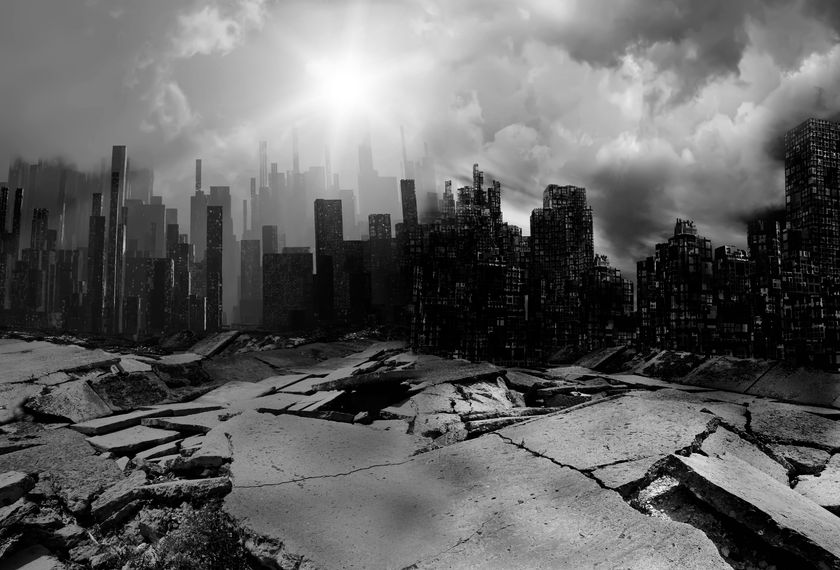
‘What if a major earthquake hits Seoul?’ is a disturbing but nonetheless necessary question, particularly at a time when issues such as a lack of guidance and responsive measures came to light after the latest earthquake left nearly 100 people injured. (Image: Yonhap)
SEOUL, Nov. 20 (Korea Bizwire) — With the southeastern city of Pohang still recovering from a 5.4-magnitude temblor last week that caused significant damage, the grim but necessary prospect of a major earthquake hitting Seoul has been a hot topic of discussion in South Korea in recent days.
‘What if a major earthquake hits Seoul?’ is a disturbing but nonetheless necessary question, particularly at a time when issues such as a lack of guidance and responsive measures came to light after the latest earthquake left nearly 100 people injured.
One local high school teacher highlights the underlying issue of lack of guidelines in case of a natural disaster like earthquakes as the teacher is alleged to have told students to continue studying, even as others rushed to get outside.
With the stakes now higher than ever, following two of the strongest earthquakes to date including last year’s 5.8-magnitude earthquake in Gyeongju and the Pohang earthquake from last week, many wonder what a major earthquake would look like for Seoul.
If a 6.5-magnitude temblor hits the South Korean capital, a city with a population of nearly 10 million, nearly 8,000 people are expected to be killed while leaving more than 100,000 people injured, according to earthquake simulation data from the Ministry of Public Safety and Security.

One local high school teacher highlights the underlying issue of lack of guidelines in case of a natural disaster like earthquakes as the teacher is alleged to have told students to continue studying, even as others rushed to get outside. (Image: Yonhap)
The data from the public safety ministry also showed that a 7.0-magnitude earthquake could devastate Seoul, causing over 670,000 casualties.
A 7.0-magnitude earthquake in Jung District, which is located at the heart of the Seoul, is expected to bring about total chaos, with an estimated 420,000 casualties in Seoul alone, with over 7 in 10 buildings suffering damage.
Though the probability of a major earthquake in Seoul is low, experts don’t rule out the possibility.
According to the Seoul Institute on Monday, the highest magnitude earthquake to hit Seoul and the surrounding area since 1990 was one that occurred in Gyeonggi Province measuring 3.0 on the Richter scale.
“There is a fault line that runs across the eastern region of Seoul and another along the Han River, leaving open the possibility for another earthquake,” the Seoul Institute said.
Stronger earthquakes in Seoul have been recorded on multiple occasions in historic documents such as the Annals of the Joseon Dynasty.
With only 18.4 percent of public facilities such as school and hospital buildings thought to be quake-resistant, according to data from the National Emergency Management Agency in 2012, experts warn South Korea is more vulnerable than countries like Japan that are more earthquake-ready.
Concerns are also growing over so-called piloti-type buildings, residential structures supported by four to eight pillars that gained popularity in recent years for a more effective use of space.
Piloti-type buildings proved particularly vulnerable during the Pohang earthquake, with pictures having surfaced on the internet of damaged pillars dangerously withstanding the weight of a building.
Despite the vulnerabilities, the number of piloti-type buildings has been increasing in line with a growing number of single households in the country.
Nearly 9 in 10 smaller residential buildings in South Korea were found to be piloti-type as of 2015, according to data released by the Ministry of Land, Infrastructure and Transport at the request of lawmaker Yoon Young-il from the People’s Party.

If a 6.5-magnitude temblor hits the South Korean capital, a city with a population of nearly 10 million, nearly 8,000 people are expected to be killed while leaving more than 100,000 people injured, according to earthquake simulation data from the Ministry of Public Safety and Security. (Image: Yonhap)
Though regulations were put into law in 2015 requiring three-story or taller buildings to be built with earthquake-resistant properties, legal loopholes allowed the widespread construction of piloti buildings without earthquakes in mind, according to Oh Sang-hoon, a professor of architectural engineering at Pusan National University.
Currently, the Seoul Metropolitan Government offers an online seismic risk assessment for local residents, which can be used on its official website.
Hyunsu Yim (hyunsu@koreabizwire.com)




![[In-depth] Top Ten Fashion Trends in 2014 Selected by the Korea Fashion Association [In-depth] Top Ten Fashion Trends in 2014 Selected by the Korea Fashion Association](http://koreabizwire.com/wp/wp-content/uploads/2014/12/nonagon-370x230.jpg)

